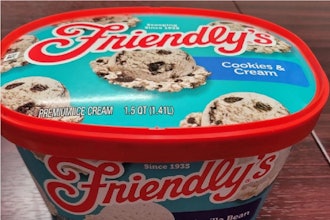
There’s much more to food packaging that just protecting eats for the consumer or making a product look more appealing. By engineering innovative polymers and addressing critical issues such as shelf life, packaging can help tackle global issues such as hunger, waste and the environment.
Recently at PROCESS Expo in Chicago, I had the chance to sit down with Dr. Loong-Tak Lim, an associate professor of food science with the University of Guelph to find out what’s trending in food packaging. Here’s what he identified as some of the biggest ideas shaping the future of how we wrap, shop for and make food.
Biodegradable Isn’t Always Best: For environmentally conscious consumers, the words “biodegradable” and the snazzy green-arrow triangle make for feel-good packaging. But Lim says consumers often don’t realize it isn’t always the greenest choice.
While biodegradable packaging materials can be broken down in the compost, they will sit in landfills for a long time due to the lack of proper microorganisms and conditions, Lim says plastics companies may make a better choice for the environment by using polymers that are recyclable and made from renewable sources like sugar or other by-products.
“You have to do a life-cycle analysis,” Lim explains.
Coca Cola, for example, recently unveiled a plastic bottle made in partnership with Virent that uses plant-based PET instead of petroleum – which is overall a better deal for the environment.
Lim says this choice is also often better for manufacturers because instead of needing to change equipment to make biodegradable plastics, renewable polymers drop into the same machines to produce the same product.
Packages That Communicate: Imagine walking into a store, seeing food packaging with limited information – like actual product freshness and expiration date – and being able to scan it with your phone to find out much more like where it was made, all of the nutrition info, how it was shipped etc. With mobile device-based near field communication technology, Lim says this could be where consumers are heading.
Manufacturers also benefit from these kinds of packing innovations. For example, Thin Film Electronics, a global electronics company, announced a partnership earlier this year with Ferngrove Wine Group to unveil the industry’s first “smart wine bottle” – which helps companies track the bottles and combating counterfeiting.
This kind of device-driven intelligent packaging technology could also be used by companies to collect informatics and better understand their consumers’ behavior or send direct marketing to shoppers.
But Lim says it’s hard to tell when this will take off in the U.S.
“The trend is there, but nobody can predict when this is going to be used in the future,” Lim says. “The driver here is cost; the cost has to be low, which is now possible with cost-effective printable electronics. Besides being intriguing, the new technology must be intuitive and hassle-free to the consumer. The ability to achieve a large-scale adoption before being displaced by the next wave of new technology development will be key to its success.
Waste Not: Food waste in the U.S. is a major problem, with some estimating that as much as 40 percent of our food gets thrown away. And Lim says it’s an even bigger issue in the production of fruits and vegetables in developing countries, where as much as 70 percent is lost. Why?
“Because optimal packaging and storage infrastructure are lacking, and there’s no good supply chain to transport food,” Lim says.
Extending the shelf life of food has already been a big trend for food packaging. But Lim says scientists – including him – are finding ways to help food last longer by looking beyond packaging, through innovative processing, creative formulation, and strategic use of naturally occurring antimicrobial/preservative agents. For example, seeds could receive a coating treatment or be modified to make the food more resistant to oxidation, keeping it fresh for longer.
“If we simply look at the packaging, it is not going to be optimal,” he says.






















